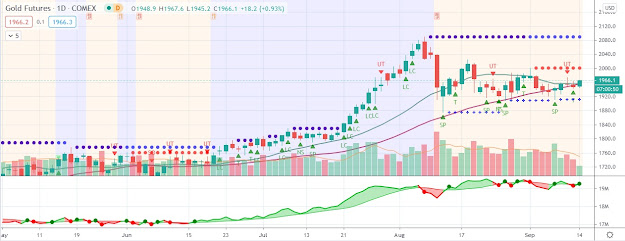Europe and Asia added further to their gold reserves in May
Gold prices held firm near $1,575 per ounce Wednesday morning despite
two better than expected reports on different sectors of the U.S.
economy. The spot price of gold
fell to as low as $1,563.42 in overnight trading, but bounced back
toward unchanged as U.S. equity markets opened. The SPDR Gold Trust
(GLD), the world’s largest gold ETF and a proxy for the gold price,
inched higher by $0.17 to $152.79 per share this morning.
Several countries in Europe and Asia added further to their gold reserves in May, according to the latest data released by the International Monetary Fund (IMF). The largest increase came from Russia, which purchased 15.5 tons last month to bring its total gold holdings to 911.3 tons. This also raised the portion of gold in Russia’s total reserves to 9.1%, according to the World Gold Council.
Turkey added the second-most amount of gold in May, 5.7 tons, raising its total to 245.0 tons. Ukraine purchased 2.1 tons – bringing its total to 32.7 tons – while Kazakhstan’s reserves increased by 1.8 tons to 100.0. It is important to note that the nations which have most significantly added to their gold reserves in recent years are also among those that have not implemented quantitative easing and/or other money printing programs. As such, it appears that these countries are at least in part attempting to hedge against the unprecedented level of currency debasement ongoing in such places as the U.S., England, and Japan.
Several countries in Europe and Asia added further to their gold reserves in May, according to the latest data released by the International Monetary Fund (IMF). The largest increase came from Russia, which purchased 15.5 tons last month to bring its total gold holdings to 911.3 tons. This also raised the portion of gold in Russia’s total reserves to 9.1%, according to the World Gold Council.
Turkey added the second-most amount of gold in May, 5.7 tons, raising its total to 245.0 tons. Ukraine purchased 2.1 tons – bringing its total to 32.7 tons – while Kazakhstan’s reserves increased by 1.8 tons to 100.0. It is important to note that the nations which have most significantly added to their gold reserves in recent years are also among those that have not implemented quantitative easing and/or other money printing programs. As such, it appears that these countries are at least in part attempting to hedge against the unprecedented level of currency debasement ongoing in such places as the U.S., England, and Japan.




Comments
Post a Comment